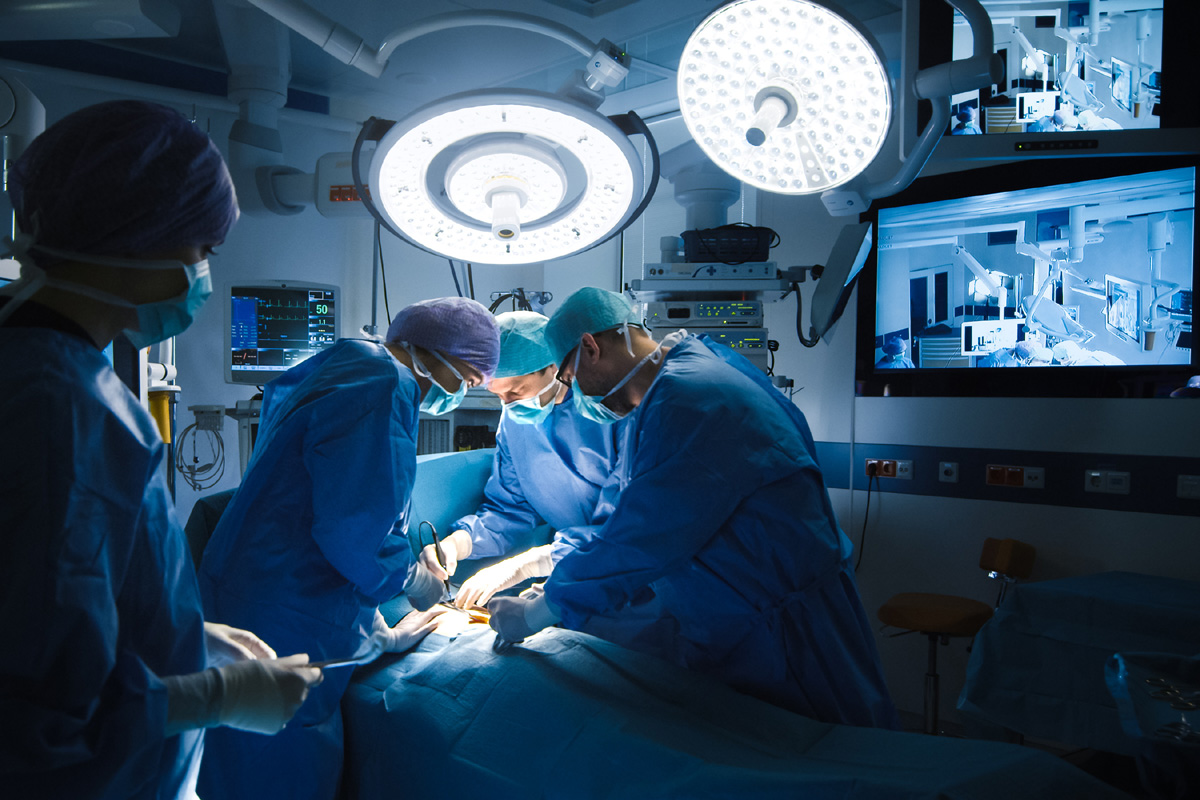As medical advancements continue to revolutionize surgical procedures, minimally invasive coccygectomy surgery is increasingly becoming a preferred option for patients suffering from severe tailbone pain. This intricate procedure requires a profound understanding, not only of its step-by-step execution, but also of pre-surgery preparation, potential complications, and post-surgery care. In the following discourse, we will methodically uncover all these aspects, providing an in-depth guide to this modern surgical approach. The information to follow is crucial for medical professionals and patients alike, seeking to navigate the intricacies of this specific surgical journey.
Understanding Coccygectomy Surgery
In the realm of orthopedic procedures, coccygectomy surgery is a minimally invasive operation designed to remove the coccyx, or tailbone, typically to alleviate persistent pain or discomfort. The tailbone, though vestigial in nature, can become a source of significant distress due to injury, childbirth complications, or certain conditions like coccydynia, necessitating its removal.
Coccygectomy alternatives exist and are often explored before resorting to surgery. These include physical therapy, use of special cushions, pain management through medication, and nerve block injections. However, when these non-surgical interventions fail to provide relief, a coccygectomy may be recommended.
While coccygectomy is generally safe, it is not without risks. Potential coccygectomy risks include infection, wound dehiscence, rectal injury, and persistent pain. Furthermore, the recovery period can be extensive, with patients requiring weeks to months for complete healing. Despite these risks, many patients report significant improvement in their quality of life post-surgery.
Understanding the nuances of coccygectomy surgery, including its alternatives and associated risks, aids in informed decision-making. It is crucial for patients and healthcare providers to collaboratively weigh the potential benefits against the risks before proceeding with this surgical intervention.
Identifying Tailbone Pain
Recognizing tailbone pain, or coccydynia, is a crucial step in the journey towards effective treatment. The symptoms can range from a dull ache to severe, debilitating pain, usually exacerbated by sitting or standing for prolonged periods. Accurate diagnosis of this condition often requires a comprehensive physical examination and may include imaging studies to rule out other potential causes of discomfort.
Symptoms of Coccydynia
Experiencing persistent discomfort or pain in the lower back, specifically in the tailbone area, is a primary symptom indicative of Coccydynia. This condition can be triggered by various factors, and understanding these Coccydynia triggers can aid in effective pain management techniques.
The symptoms of Coccydynia include:
- Increased discomfort when sitting or with prolonged sitting.
- Pain that worsens when moving from a sitting to standing position.
- Tenderness or bruising in the tailbone area.
- A noticeable relief in pain when standing or walking.
The severity of these symptoms can vary greatly from person to person, and it’s crucial to consider these factors in determining the most appropriate treatment plan. Recognizing these symptoms early can contribute to a timely and efficient pain management strategy.
Diagnosing Tailbone Pain
While understanding the symptoms of Coccydynia is a significant initial step, a precise diagnosis is crucial to implement an appropriate and effective treatment plan for tailbone pain. This process generally involves a comprehensive review of the patient’s medical history, a physical examination, and imaging tests such as X-rays or MRI. These assessments help discern the severity of the condition and rule out other potential sources of discomfort. Depending on the diagnosis, alternative treatments such as physical therapy, medication, or injections may be recommended before considering surgery. It’s also important to acknowledge the psychological impact of chronic pain, as this could influence the patient’s perception of pain and treatment outcomes. Therefore, a holistic approach to diagnosis is critical.
Pre-Surgery Consultation
Before proceeding with a minimally invasive coccygectomy, a comprehensive pre-surgery consultation is crucial to assess the patient’s overall health and specific medical history. This consultation also enables the surgeon to discuss the patient’s concerns, manage any pre-operative anxiety, and clarify insurance considerations. Such conversations are essential to ensure that the patient has a complete understanding of the procedure, its benefits, risks, and post-operative recovery.
During the pre-surgery consultation, the surgeon will focus on several aspects including:
- Previous Medical History: The surgeon will need a detailed account of the patient’s past and present medical conditions, surgeries, and medications.
- Lifestyle Review: This includes the patient’s habits such as smoking, alcohol consumption, physical activity levels, which can influence surgery outcomes.
- Anxiety Management: Addressing patient fears or worries about the surgery and explaining the steps taken to minimize surgical risks.
- Insurance Considerations: Guiding the patient through the financial aspects of the procedure, including insurance coverage, out-of-pocket costs, and potential financing options.
Diagnostic Tests Required
Following the comprehensive pre-surgery consultation, several diagnostic tests are typically required to evaluate the patient’s physical condition and readiness for a minimally invasive coccygectomy. The application of imaging techniques is crucial in this phase to identify the precise location of the coccyx and its current state. This includes X-rays for initial examination and Magnetic Resonance Imaging (MRI) for a detailed view of the bone and surrounding tissues, which assist in planning the surgical approach.
To assess the severity of the pain and its sources, pain management techniques such as nerve blocks may be employed. This procedure involves injecting an anesthetic near specific nerves to temporarily block pain signals, verifying the coccyx as the pain origin.
Furthermore, a complete blood count (CBC), coagulation profile, and metabolic panel are conducted to ascertain overall health status. These tests provide insight into the patient’s ability to withstand surgery and potential for postoperative complications. For instance, they can detect anemia, clotting disorders, or kidney and liver conditions that may influence surgical outcomes.
The results of these diagnostic tests are pivotal in the final decision-making process and provide a comprehensive view of the patient’s suitability for a minimally invasive coccygectomy.

Preparing for the Surgery
Before proceeding with a minimally invasive coccygectomy, several preparatory steps are essential to ensure the patient’s safety and successful surgical outcomes. This includes a comprehensive pre-surgery health assessment aimed at identifying any potential risks or complications that could arise during the procedure. Additionally, certain preoperative measures, such as fasting or medication adjustments, may be necessary to further facilitate the smooth execution of the surgery.
Pre-Surgery Health Assessment
In preparation for a minimally invasive coccygectomy surgery, it is invariably crucial to undergo a thorough health assessment to ensure an optimal surgical outcome. This process involves a comprehensive examination of your current health status and may require lifestyle modifications and nutritional considerations.
- Begin with a comprehensive medical evaluation to identify any existing conditions that may complicate surgery.
- Consider lifestyle modifications, such as cessation of smoking, limiting alcohol intake, or increasing physical activity, to improve surgical outcomes.
- Nutritional considerations should be made, optimizing diet to support healing and recovery.
- Mental health assessments may also be beneficial, ensuring you are emotionally prepared for the surgery and its recovery period.
This assessment will provide a solid foundation for your surgical journey, setting the stage for a successful coccygectomy surgery.
Necessary Preoperative Measures
Preparing for a minimally invasive coccygectomy surgery necessitates a series of preoperative measures, designed to optimize patient readiness and facilitate a smooth surgical process. Key among these steps are dietary adjustments and medication management. Prior to surgery, doctors often recommend certain dietary changes to mitigate potential complications, such as constipation or dehydration. This may involve increasing fluid intake and incorporating more fiber-rich foods. Medication management, on the other hand, involves assessing the patient’s current drug regimen, and making necessary alterations. Some medications may need to be discontinued or adjusted to avoid possible adverse effects during surgery. It is crucial to discuss all prescription and over-the-counter medications with your doctor to ensure a safe surgical experience.
Step-by-step Surgical Procedure
Delving into the intricacies of the minimally invasive coccygectomy procedure, our journey commences with the patient being placed in the prone position on the operating table. This positioning facilitates optimal access to the coccyx and reduces surgical risks associated with more invasive procedures. The patient’s lifestyle can significantly influence the surgical approach, with active individuals often better suited for this minimally invasive procedure.
The step-by-step surgical procedure entails:
- Preparation: The surgical site is sterilized, and a local anesthetic is administered to numb the area.
- Incision: A small incision, typically 2-3 cm, is made over the coccyx.
- Removal: The coccyx is carefully detached from the surrounding ligaments and muscles, and removed.
- Closure: The incision is closed using sutures or surgical staples.
Throughout the procedure, measures are taken to minimize bleeding and surgical risks. Postoperative discomfort is typically less intense due to the minimal invasiveness of the procedure. As a result, the patient’s lifestyle is less disrupted, with quicker recovery periods compared to traditional surgical methods. However, it’s important for patients to understand that individual recovery times can vary.
Navigating Post-Surgery Care
Following a minimally invasive coccygectomy, post-operative care becomes a pivotal component of the patient’s recovery journey, demanding meticulous attention to detail and adherence to prescribed protocols. This phase involves a dedicated blend of pain management techniques and emotional support post surgery, which are equally vital in facilitating a smooth and efficient recovery.
Pain management techniques vary widely depending on the intensity of the discomfort experienced by the patient. It often includes a combination of medication, physical therapy, and lifestyle modifications. Professionals may prescribe a regimen of anti-inflammatory drugs or analgesics to alleviate pain and reduce inflammation. However, it’s essential that patients closely follow their healthcare provider’s directions to avoid potential side effects.
In addition to physical care, emotional support post surgery plays a crucial role in the healing process. Feelings of anxiety, depression, or frustration are common after surgery and can significantly impact recovery. It’s vital that patients communicate openly with their healthcare team about any emotional distress they are experiencing. Support from mental health professionals, coupled with encouragement from loved ones, can greatly enhance the patient’s outlook and resilience during this challenging time. The goal of post-operative care is a comprehensive approach that addresses both physical pain and emotional well-being.
Dealing With Potential Complications
Despite the typically successful outcomes of a minimally invasive coccygectomy, it’s imperative to understand that potential complications may arise during the recovery period, requiring prompt attention and appropriate intervention.
Complication prevention is crucial in postoperative care, minimizing the risk of unwanted outcomes. One should be aware of the common postoperative risks and signs indicating possible complications. These may include:
- Persistent or worsening pain that doesn’t respond to pain management strategies.
- Signs of infection, such as increased redness, swelling, or pus draining from the surgical site.
- Altered sensation or motor function in the legs, which could indicate nerve damage.
- Difficulty in bowel or bladder control.
It’s also crucial to follow the postoperative care instructions provided by the medical team, as adhering to these guidelines can significantly reduce the risk of complications. These instructions may cover aspects like wound care, activity restrictions, and medication management.
Early detection and intervention in the case of complications can significantly improve the patient’s prognosis and mitigate the impact on their quality of life. Therefore, patients and caregivers should remain vigilant and proactive in monitoring for potential complications and seeking immediate medical assistance when needed.

Importance of Physical Therapy
Regularly engaging in physical therapy after a minimally invasive coccygectomy plays a vital role in facilitating optimal recovery and restoring full functionality. Therapy techniques are designed to promote mobility, improve strength, and alleviate pain associated with the surgical procedure.
Physical therapy is typically tailored to the specific needs and abilities of the patient, which may be determined through a comprehensive evaluation of their physical status post-surgery. The therapy techniques employed may include stretching exercises to improve flexibility, strength training to rebuild weakened muscles, and balance training to enhance stability.
The rehab benefits derived from a structured physical therapy program are multifold. Primarily, it accelerates the healing process by improving blood circulation to the surgical site, thereby reducing inflammation and promoting tissue regeneration. Additionally, physical therapy can help minimize the risk of post-surgery complications such as muscle atrophy or joint stiffness. It also equips patients with the necessary skills and knowledge to maintain their health and prevent future injuries.
Evaluating Surgery Success
After completing the prescribed physical therapy regimen, it becomes crucial to evaluate the success of the minimally invasive coccygectomy surgery by considering several key indicators. These indicators, or success metrics, can offer significant insights into the effectiveness of the procedure and the patient’s post-operative satisfaction.
Key success metrics include:
- Pain Reduction: A successful surgery should result in a significant reduction in coccyx pain, allowing the patient to resume daily activities without discomfort.
- Improved Mobility: Patients should experience enhanced mobility, including the ability to sit, stand, and walk without pain.
- Absence of Complications: No post-surgical complications such as infection, hematoma, or nerve damage should be present.
- Patient Satisfaction: The patient’s overall satisfaction with the surgery outcome plays a significant role in evaluating success.
Analysis of these metrics can help determine the success of the minimally invasive coccygectomy surgery. Patients should report high post-operative satisfaction, reflecting a significant improvement in their quality of life. Regular follow-ups with the surgeon are essential for monitoring these indicators, ensuring optimal outcomes and adjusting the treatment plan if necessary.
Tips for Speedy Recovery
To facilitate a swift and effective recovery post-minimally invasive coccygectomy surgery, there are several key guidelines patients can incorporate into their daily routine. Firstly, posture improvement is crucial. Patients should be mindful of maintaining an upright posture, especially when sitting for extended periods. This positioning aids in alleviating pressure on the coccyx and promotes healing. It is recommended to use a donut-shaped pillow or a coccyx cushion to support this.
Dietary changes are another significant element for a speedy recovery. A balanced diet rich in proteins, vitamins, and minerals is essential for tissue repair and wound healing. Patients should increase their intake of fruits, vegetables, whole grains, lean meats, and dairy products. In addition, maintaining hydration by drinking plenty of water can greatly assist in flushing out toxins and promoting overall well-being.
Lastly, patients should adhere to their prescribed medication routine and follow up with their healthcare provider regularly. Regular check-ups help monitor the healing process and detect any potential complications early. Light physical activities such as walking can also be beneficial, but only under medical guidance. By following these measures, patients can anticipate a quick recovery post-coccygectomy surgery.
Frequently Asked Questions
What Lifestyle Changes May Be Necessary After a Coccygectomy Surgery?
Post coccygectomy surgery, lifestyle changes may include implementing pain management strategies, such as regular exercise and medication. Dietary modifications might also be necessary to promote healing and maintain overall health during the recovery period.
Are There Any Alternative Treatment Options to a Coccygectomy Surgery?
Yes, alternative treatments to coccygectomy surgery do exist. These include pain management techniques such as physical therapy, medications, and nerve blocks, as well as non-surgical interventions like steroid injections and cognitive behavioral therapy.
How Will Coccygectomy Surgery Affect My Day-To-Day Activities?
Coccygectomy surgery may initially disrupt your daily activities due to post-operative pain. However, through effective pain management and a comprehensive rehabilitation process, you should gradually regain normal function and mobility within a few weeks.
Can Coccygectomy Surgery Affect Future Pregnancies or Delivery in Women?
Coccygectomy surgery can potentially influence future pregnancies and delivery in women. It may cause pregnancy complications such as discomfort and may necessitate specific delivery methods, like cesarean section, to avoid pressure on the surgical site.
Is It Possible to Return to High-Impact Sports or Exercises After a Coccygectomy Surgery?
Yes, it’s possible to return to high-impact sports after coccygectomy surgery. However, the Sports Rehabilitation Timeline varies, and Exercise Modifications Post Surgery may be necessary to ensure a safe and effective return to activity.

